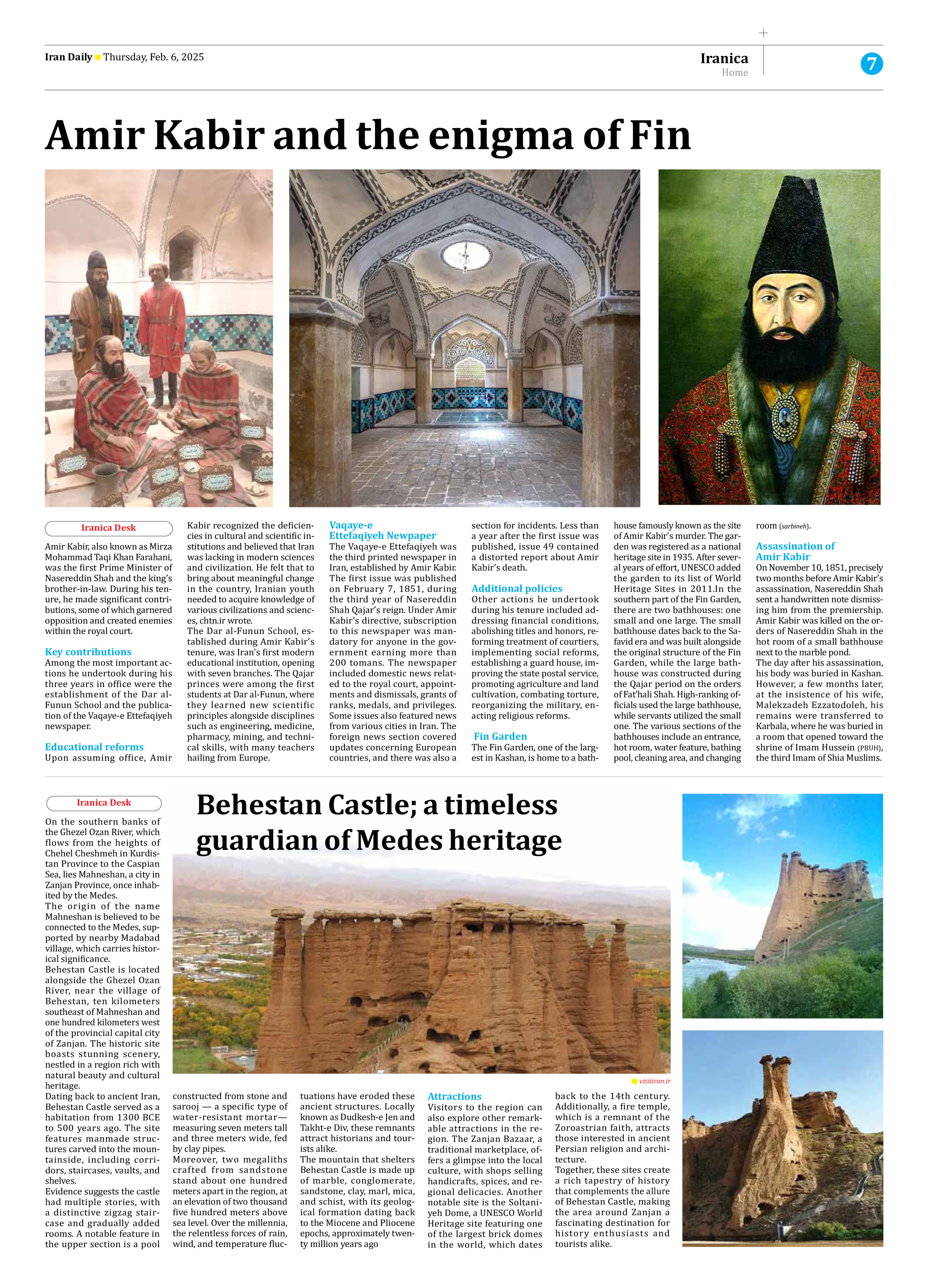
Behestan Castle; a timeless guardian of Medes heritage
On the southern banks of the Ghezel Ozan River, which flows from the heights of Chehel Cheshmeh in Kurdistan Province to the Caspian Sea, lies Mahneshan, a city in Zanjan Province, once inhabited by the Medes.
The origin of the name Mahneshan is believed to be connected to the Medes, supported by nearby Madabad village, which carries historical significance.
Behestan Castle is located alongside the Ghezel Ozan River, near the village of Behestan, ten kilometers southeast of Mahneshan and one hundred kilometers west of the provincial capital city of Zanjan. The historic site boasts stunning scenery, nestled in a region rich with natural beauty and cultural heritage.
Dating back to ancient Iran, Behestan Castle served as a habitation from 1300 BCE to 500 years ago. The site features manmade structures carved into the mountainside, including corridors, staircases, vaults, and shelves.
Evidence suggests the castle had multiple stories, with a distinctive zigzag staircase and gradually added rooms. A notable feature in the upper section is a pool constructed from stone and sarooj — a specific type of water-resistant mortar—measuring seven meters tall and three meters wide, fed by clay pipes.
Moreover, two megaliths crafted from sandstone stand about one hundred meters apart in the region, at an elevation of two thousand five hundred meters above sea level. Over the millennia, the relentless forces of rain, wind, and temperature fluctuations have eroded these ancient structures. Locally known as Dudkesh-e Jen and Takht-e Div, these remnants attract historians and tourists alike.
The mountain that shelters Behestan Castle is made up of marble, conglomerate, sandstone, clay, marl, mica, and schist, with its geological formation dating back to the Miocene and Pliocene epochs, approximately twenty million years ago
Attractions
Visitors to the region can also explore other remarkable attractions in the region. The Zanjan Bazaar, a traditional marketplace, offers a glimpse into the local culture, with shops selling handicrafts, spices, and regional delicacies. Another notable site is the Soltaniyeh Dome, a UNESCO World Heritage site featuring one of the largest brick domes in the world, which dates back to the 14th century. Additionally, a fire temple, which is a remnant of the Zoroastrian faith, attracts those interested in ancient Persian religion and architecture.
Together, these sites create a rich tapestry of history that complements the allure of Behestan Castle, making the area around Zanjan a fascinating destination for history enthusiasts and tourists alike.







